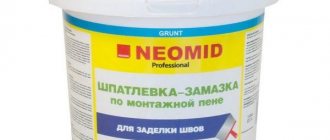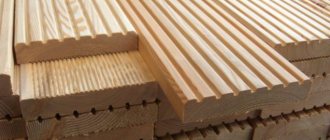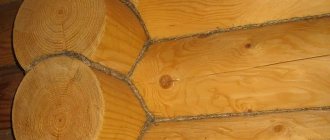Photo: ShutterStock/Fotodom.ru
Household polyurethane foams with an applicator tube: Foam Premium (Penosil) summer (750 ml pack - 262 rubles). Photo: Penosil
Polyurethane foam is an indispensable element of many construction works. It is used when installing windows and doors, filling various openings and openings, for connecting and sealing frame construction structures, fixing wall panels and roofing slates. Among the main manufacturers of these products are Henkel (Makroflex trademark), Bison International, Den Braven, Penosil, Profflex (Profflex, Storm Gun trademarks), Soudal, Selena (Tytan Professional trademark). The price of a cylinder with polyurethane foam depends on its volume, weight, popularity of the brand and ranges from 100 to 600 rubles. It is worth noting that polyurethane foams are divided into one- and two-component ones. Since most of the foams presented on our market are single-component, let’s talk about them.
The consequence of poor sealing is distortions, sagging, and reduced service life of windows. Correct use of foam provides the necessary heat and sound insulation. Photo: ShutterStock/Fotodom.ru
Polyurethane foam in questions and answers: how to choose, store and use it correctly
Polyurethane foam, despite its name, is not intended for installation. Its task is to fill and seal gaps and joints for the purpose of thermal and sound insulation. We answer questions regarding the selection and application of this material.
Household polyurethane foams with an applicator tube: Foam Premium (Penosil) summer (750 ml pack - 262 rubles). Photo: Penosil
Polyurethane foam is an indispensable element of many construction works. It is used when installing windows and doors, filling various openings and openings, for connecting and sealing frame construction structures, fixing wall panels and roofing slates. Among the main manufacturers of these products are Henkel (Makroflex trademark), Bison International, Den Braven, Penosil, Profflex (Profflex, Storm Gun trademarks), Soudal, Selena (Tytan Professional trademark). The price of a cylinder with polyurethane foam depends on its volume, weight, popularity of the brand and ranges from 100 to 600 rubles. It is worth noting that polyurethane foams are divided into one- and two-component ones. Since most of the foams presented on our market are single-component, let’s talk about them.
The consequence of poor sealing is distortions, sagging, and reduced service life of windows. Correct use of foam provides the necessary heat and sound insulation. Photo: ShutterStock/Fotodom.ru
What is polyurethane foam?
Maxi (Profflex) all-season (750 ml pack - 218 RUR). Photo: Profflex
One-component polyurethane foam is a polyurethane sealant in an aerosol package. The basis of the foam is a prepolymer (prepolymer) synthesized from a polyol and isocyanate. As a result of the polymerization reaction, partly occurring inside the cylinder, and mainly in the air, after release outside, these substances form polyurethane. Coming out of the container, the prepolymer sharply increases in volume (20–40 times) and turns into foam. Expanding, it penetrates into hard-to-reach cavities and fills voids. Then the cellular mass gradually polymerizes (hardens), absorbing moisture from the air or from a previously wetted surface. After a day, it becomes a chemically stable substance - polyurethane. It is non-toxic, does not deteriorate for a long time, and is resistant to moisture. This rather rigid, finely porous material consists of closed cells and serves as a good insulator.
Polyurethane foam sealant: a little theory
How to work with sealant without a foam gun? Very simple. But first, let's talk a little about the main character of this article - foam. For what? And then, to understand the principle of operation of polyurethane foam. I think no one wants to ruin the substance and the home. It is so? Great. Then let's get started.
Story
The sealant was born thanks to the German chemist-technologist Otto Bayer. He invented the substance back in 1937. Or rather, he discovered polyurethane. And in 1970, specialists from an English company invented polyurethane foam sealant.
It has been tested and improved over the years. In 1980 it was used by construction workers in Sweden. The invention was to the liking of many maestros of architectural art, since it had a number of positive properties.
Today, of course, sealant is produced in many countries. For its production, exclusively innovative technologies are used.
Concept
Polyurethane foam or polyurethane foam sealant is a substance that consists of two components - polyols and methyl...ate (you'll break your tongue there). In addition, in the manufacturing process of the product, stabilizers, catalysts, a mixture of butane and propane, etc. are used.
How is household foam different from professional foam?
Tytan Professional STD (Selena) summer (750 ml pack - 315 RUR). Photo: Selena
The container with household foam is equipped with a special applicator tube. Thanks to this device, no additional tools are required to release the viscous mixture. Household foams are generally single-use products. The yield of the mass is difficult to dose, and it itself is characterized by high density and low polymerization rate. Professional foams are designed for repeated use and better sealing. In them, the supply and dosing of the foam jet occurs using a plunger gun. It is screwed onto a special ring on the cylinder. It is professional foam that should be given preference when installing doors and windows.
Specifications
Pena is a lady with excellent technical characteristics, for which she has gained an army of fans. So, the characteristics of polyurethane foam are as follows:
- shrinkage – 5%;
- porosity – 88%;
- output volume – 300 ml can – 20 l of foam, 500 ml – 40 l, 750 ml – 50 l, 1000 ml – 80 l;
- polymerization speed - 20 minutes - gain of useful volume, 4 hours - hardening, 24 hours - complete hardening;
- adhesion – excellent adhesion to wood, concrete, glass, metal, PVC, stone, poor adhesion to silicone and polyethylene;
- heat resistance - -45/+90°С;
- strength – 3–5 N/cm2.
Always buy extra foam. Manufacturers often deceive consumers. So, for example, they write “50 liters” on the cylinder, but in reality it is much less, well, somewhere around 25–30 liters. I think everyone understands why cunning manufacturers do this - a common marketing ploy. Therefore, play it safe.
At what temperature can foam be used?
Soft foam cleaners: PU Foam Cleaner Click (Soudal) (500 ml pack - 257 RUR). Photo: Soudal
Depending on the operating temperature range, polyurethane foams are divided into summer, winter, and all-season. For the former, the range of permissible temperatures is in the positive zone: from 5 to 30 ˚C. Winter and all-season foams are used in a wider range: from –10 °C (some from –25 °C) to 30 °C. In this case, it is worth considering the manufacturer’s advice on the temperature of the cylinder. In the cold season, with low air humidity, the course of chemical reactions slows down, the viscosity of the mixture increases, and the pressure in the cells of the foam mass decreases. For normal operation of winter foam, many manufacturers advise warming the balloon to room temperature (23 °C), keeping it in a living room for about a day or immersing it in warm water (about 30 °C). However, there are products for which the use of a cold cylinder is acceptable.
Winter foams contain components that help better absorb moisture from the environment and maintain the desired consistency at low temperatures. Winter foams can be used in cold and warm seasons without compromising their performance properties. Photo: ShutterStock/Fotodom.ru
Additional Tips
There are several recommendations for those who are interested in using polyurethane foam; the videos will also help you understand this issue.
- The water sprayer and knife are prepared in advance in order to later get rid of the excess that was squeezed out along with the rest of the mass.
- If foam appears in unnecessary places, it is removed using a soft sponge with acetone. These are standard terms of use.
- With economical consumption, it becomes easier to avoid material costs. The applied mixture can also be stored for quite a long time.
- After applying foam at home and in other objects, the surface is treated after a maximum of 4 hours. After 7-8 hours it will be more difficult to cut the material as everything will have completely hardened.
- The work must be carried out in a respirator; it will protect human organs from foreign substances getting inside. Gloves and goggles are also recommended.
- There is no need to wait until the color of the polyurethane foam darkens while using it. This means the beginning of a reaction to ultraviolet light.
- Polyurethane foam cannot be used near open fire, cylinders cannot be stored where the sun constantly shines. The sealant contains substances that can be flammable.
- When applied to a dirty surface, you can also encounter problems. It is better to use a vacuum cleaner first, and at the same time clean the floors.
- Too strong temperature fluctuations can disrupt the structure of the composition.
It is important to use the material wisely depending on the time of year and temperature.
Why do you need to shake a can of polyurethane foam before work?
ECO Tytan Professional (Selena) (500 ml pack - 235 RUR). Photo: Selena
A container of polyurethane foam contains several components of different densities. If stored immobile for a long time, they can become distributed in layers. Therefore, before starting the process, the container should be shaken vigorously for half a minute to mix the components. Also, shake it periodically during use and especially after smoking breaks. Insufficient shaking can lead to the formation of a coarse foam structure and reduced volume. During operation, the cylinder is held upside down. In this position, the propellant gas drops below the polymer mass and ensures maximum use of the contents.
The surfaces on which polyurethane foam is applied must be thoroughly dust-free and free of dirt, oils, grease and ice. Photo: ShutterStock/Fotodom.ru
When can you cut off excess foam?
The polymerization time of polyurethane foam is affected by the temperature of the environment, the cylinder itself and the size of the cavity. On average, professional foam hardens in a cavity 30 mm wide in 20–30 minutes, while household foam hardens somewhat more slowly—in 40–60 minutes. The expansion process is completed in a day, and then you can begin to remove the solid mass.
Vertical gaps are filled with polyurethane foam, moving from bottom to top. Photo: ShutterStock/Fotodom.ru
The hardened foam is carefully cut off with a sharp knife. Photo: ShutterStock/Fotodom.ru
- Construction Materials
How and with what to wash polyurethane foam from hands and clothes: a complete review of means and methods
Foam cleaners
Winter professional mounting foams: Makroflex Premium Mega 70 (Henkel) (870 ml pack - 390 RUR). Photo: Henkel
The polyurethane foam remaining after mechanical cleaning of the gun, cylinder (valve and the outside of the cylinder itself), clothing and other surfaces can be easily removed using a special aerosol cleaner. There are two types of cleaners available:
- for soft foam;
- for hardened foam.
They all contain strong solvents. Therefore, before use, it is advisable to test the effect of the aerosol on a hidden area of the surface being cleaned.
How much foam is needed to fill cavities?
Cleaner for hard foam: Tytan Professional (Selena) (100 ml pack - 379 RUR). Photo: Selena
In order to prevent deformation of insufficiently strong walls during the expansion of the foam mass, it is recommended to fill no more than a third of the voids and cracks with foam. When installing interior doors, it is advisable to use several spacers to secure the frame. Then the foam increasing in volume will not be able to deform it. However, with the correct professional dosage of foam, this is not necessary.
The volume of finished foam depends on the capacity of the cylinder and its filling, the temperature of the air and the cylinder, air humidity, the quality of the gun and the qualifications of the craftsman. High-performance foams produce 65 liters or more, while regular foams produce 25–45 liters.
Should surfaces be dampened before applying foam?
Relative air humidity of more than 50% is sufficient for the normal process of foam polymerization. In such conditions there is no need to moisten the surfaces. However, with low humidity (less than 50%), which is typical during the cold season and hot summer days, moistening the seams and cavities will increase adhesion and improve the curing of the foam. This should be done without fanaticism, so that there are no drops on the surface and no water accumulates, otherwise its excess will prevent the foam from connecting to the surface.
The construction gun must be cleared of foam immediately after removing the empty cylinder, preventing the mass from hardening inside the gun. Photo: ShutterStock/Fotodom.ru
How to use polyurethane foam?
Polyurethane foam is an excellent sealant and insulation material. It is used both for the installation of such large-scale structures as doors and windows, and for repairing minor defects. This material is used to patch various cracks and crevices, restore tightness at joints, and even make other building materials. Foamed polyurethane is quite easy to use, but you need to follow certain rules for working with it and be quite careful so that the seam is smooth and lasts a long time.
How long does it take to dry?
Polyurethane foam has numerous positive properties: excellent adhesion, low shrinkage, ease of use, low thermal conductivity, and others. Individual properties are important when choosing products, as they determine the areas of application. And some parameters will be useful to the contractor already during the work. One of these parameters is the duration of drying and curing, knowledge of which allows you to have information about when it is possible to continue working with assembly joints.
Peculiarities
Cured polyurethane foam is an elastic, solid material of a yellowish-white color. This very light substance has excellent heat and sound insulation properties. It very quickly loses its properties under the influence of ultraviolet radiation, so it is used mainly indoors.
This type of foam has a number of advantages that make it stand out from other materials:
- increased moisture resistance, high levels of sound and heat insulation;
- low current conductivity, which allows it to be used when installing electrical networks;
- many types of foam are resistant to fire, which allows expanding the scope of its application;
- after leaving the cylinder, such foam expands in volume and fills even those microcracks into which it is impossible to insert the gun tube;
- polyurethane can be used to glue surfaces made of different materials, for example, wood or brick;
- The foam is absolutely non-toxic and resistant to chemical attack.
Almost all of the above properties must be indicated by the manufacturer in the appropriate certificates, which can be requested from the seller.
The packaging itself must contain the following information:
- foam expansion volume. It can range from 10 to 300%, but most often the actual foam is still slightly less, since this percentage is indicated for ideal conditions;
- its viscosity;
- the volume of the container itself.
Most often, all these characteristics depend on the type and purpose of the foam, so you need to know which polyurethane it is and what it should be used for.
Release form
All types of polyurethane insulation differ according to several criteria.
Depending on the method of application and form of release, they can be of two types.
- Professional foam is produced in special cylinders, which are inserted into a plastic gun with metal clamps. This gun allows you to use polyurethane economically and in equal portions. The main thing is to thoroughly rinse the device after use so that any remaining substances in it do not harden.
- Instead of a gun, household foam packages are equipped with a small tube that is placed on the lever. It is not suitable for large repairs, but it will cope perfectly with minor defects.
Depending on what time of year and at what temperature the polyurethane will expand and harden, the following types of polyurethane foam are distinguished:
- summer – used at temperatures from +5 to +35 degrees;
- winter – used at temperatures from -18 to +35 degrees;
- universal - costs much more, but can be used all year round.
It is worth noting that the temperature ranges are indicated not for air, but for the surface on which the composition will be applied. The lower its temperature, the less expansion of the finished layer will be.
In addition, foam can vary in type depending on the flammability class:
- B3 – flammable substance;
- B2 – self-extinguishing substance;
- B1 – fire-resistant compounds.
Finally, polyurethane foams vary in composition. They can be one- or two-component. However, the latter type of foam is so difficult to handle that it is practically not used for private construction and when renovating premises with your own hands. Two-component foam hardens in a quarter of an hour and there is practically no time left to eliminate defects, so only experienced professional builders use it.
Detailed cross-sectional diagram of the pistol parts
The pistol consists of a body part (5) to which a barrel (2) and a handle (10) are attached with a threaded connection. At the end of the barrel there is a nozzle (1), an axially located needle rod (3) is compressed inside, connected to the trigger handle (12).
adjustment of the foam flow occurs due to a device located in the body and includes a pressure spring (9), clamped in a fastening nut (8) and connected at one end to the body and the other end to the needle rod, lining (7), placed in the through hole (6) and fixing sleeve (11). Rotation of the liner causes axial movement of the sleeve and limits the sliding of the needle rod, thereby controlling the flow of the foam. The pistol body is also equipped with an adapter (4), which is connected to the barrel.
Depending on the type of model, mounting guns may have additional functional parts, for example:
- bolt-spacer – most often soldered into the gun body;
- replaceable nozzles - plastic or silicone tubes of various shapes, diameters or lengths. Their use makes it easier to work in hard-to-reach places.
Scope of application
Most often, polyurethane foam is used in the process of installing windows and doors, laying electrical wiring and pipelines. Due to the high thermal insulation in this way, it is possible to foam seams and grooves in cooling and heating systems, cracks in the roof and when insulating the surface of walls, floors or ceilings. It perfectly fastens wall panels and foam boards, providing excellent waterproofing. It is applied to the outside of steel or cast iron bathtubs to reduce heat transfer from the metal when the bathtub is filled with hot water. Using polyurethane, you can insulate the space behind the sheathing of PVC panels. In almost half of the repair processes it remains an indispensable material.
Recommendations for use
In order to avoid any problems during both minor and major repairs of your own house or apartment, you need to be able to use both professional and household foam. To work correctly with the first one, you must correctly install and use a special construction gun.
Gun installation includes the following steps:
- To begin, the foam balloon is heated in warm water to room temperature, after which it is shaken vigorously for 30 seconds. This will give the polyurethane a homogeneous state, which will allow it to come out of the cylinder smoothly and in full;
- The protective cap is removed from the upper tank of the gun, it is turned with the handle down and the cylinder is screwed into it. The container is screwed in with force until a hissing sound appears, which means that the mixture has begun to flow into the tool;
- if the gun has been previously used and has not been thoroughly washed, then the hissing will not be heard and you will have to purchase a new tool;
- The system of connected elements is shaken vigorously several more times, the adjustment screw is turned a quarter turn and, holding the trigger, they begin to apply.
Working with such equipment does not require specific skills, but it will require considerable dexterity if this is the first time.
Applying foam from a gun is performed as follows:
- first you need to clean the working surface from dust and dirt, then lightly wet it with a regular spray, since the foam interacts better with a wet surface;
- the tool nozzle is directed to the surface;
- foam is supplied in the required quantity by smoothly pressing the trigger;
- to pour the composition into a vertical recess, it must be applied from bottom to top;
- wide spaces are filled with zigzag movements of no more than a third of the volume, since the foam expands greatly in air;
- It is better to replenish the area afterwards than to cut off excess hardened substance.
Working with polyurethane foam without a gun: how to use
Polyurethane foam is an excellent method of sealing. It is used for large-scale repair work or when it is necessary to patch a small defect in the house. It is easier to work with it using a special gun, although you can do without it, saving on the purchase. But first you need to learn how to properly use sealant and understand how to use polyurethane foam without a gun.
Polyurethane foam is a difficult material. A frequent question from people who want to carry out construction work on their own is whether it is possible to use polyurethane foam if there is no gun. To do this, you need to know its properties and basic rules of use .
Popular questions is it possible
Application of polyurethane foam is possible for various purposes. Many users ask various questions about the use of this sealant. To dispel all doubts, we will answer the main exciting questions.
Foam the wiring
During renovations, many people have a question: is it possible to foam the wiring in the wall? As for sealing cable penetrations, in such cases you cannot even use fire-resistant polyurethane foam. If a fire occurs, the foam will melt in any case, and smoke will flow into adjacent rooms. Also, you cannot foam grooves with wires. For this it is better to use gypsum compounds.
Wires can be foamed with foam in a concrete wall if there are no twists. But if you need to replace the wiring in the future, there will be access issues because the foam is difficult to clean.
Foam the socket
Polyurethane foam is used for various purposes, including using it to foam the socket if necessary. The socket boxes are securely and securely attached to construction sealant.
The most important thing in installation is to prevent the polyurethane composition from getting on the contacts. Before starting work, you need to unplug the outlet from the electricity. After complete drying, it is recommended to cover the foam with plaster.
Foam heating pipes
This question worries many during the construction and renovation of premises. The answer here is the following: it is not recommended to foam pipelines that pass through walls or partitions. In general, the use of any flammable insulation materials is prohibited.
However, there are no clear prohibitions on the use of polyurethane foam if it has fire-resistant properties. Therefore, if you need to foam heating pipes, this must be done using a composition that is resistant to high temperatures.
Foam the bathhouse from exhaustion
The widespread use of construction foam often leads to the question: is it possible to foam the cracks in a bathhouse from the inside? In general, this is not recommended, but it is not prohibited either. It is simply not practical to use a synthetic compound with environmentally friendly materials.
In bathhouses, as a rule, the decoration includes boards, timber, and natural stones. Also, under the influence of high temperatures, polyurethane will begin to melt, releasing harmful substances. Therefore, foam cannot be used in the steam room. It is better to give preference to sealants that are not afraid of high temperatures.
If the use of foam is unavoidable, it is necessary to choose professional compositions with fire-resistant properties.
Foam the log house
Using construction polyurethane foam, you can only temporarily foam a log house. This material is not suitable as a permanent sealant in joints for the following reasons:
- The environmental friendliness of a wooden structure is compromised.
- Construction foam does not have elasticity, which in turn can lead to cracks in a wooden frame.
- Wood is a breathable material, and foam will clog it. Moisture and rot will appear at the junction of wood and polyurethane.
Polyurethane foam with a tube
First you need to determine what type will be used for repairs. In construction stores you can see two types of foam:
How to choose the right composition? To treat a large area, the volume of the cylinder should be taken into account. The quality of household products can be worse compared to professional brands. Because of this, major repairs require professional foam repairs.
Here are the basic settings for how to use polyurethane foam with a tube:
- You must first shake the container for 30 seconds , ensuring that the material inside it is mixed until homogeneous and thereby increasing the intensity of the output.
- The cap is removed and a PVC tube is attached to the valve. It is included in the kit if it is a household type sealant. For a professional cylinder, the tube will need to be purchased separately.
- The free end is brought to the place where the sealant needs to be applied. The gap is filled by 30–50%. The composition after application increases in volume as it dries. Partial filling reduces consumption. If applied correctly, the gap will eventually fill 100%.
- If the foam dries and it becomes clear that there is not enough of it, you can apply another layer. But it is better to carry out sealing without a gun the first time, because the composition comes out in excess and is less amenable to precise dosing.
- The material flows first into the tube, and then to the desired place after pressing the cylinder valve.
If the gun is not at hand, this does not mean that the work will have to be postponed. You can use foam without a gun in the following ways:
- Premium material requires a tube, but at high pressure a lot of excess material can come out, increasing flow and thereby costs. To avoid this effect, you can take two tubes with different lumen diameters . First, place a tube of larger diameter on the cylinder, then securely fix a tube of smaller diameter in it. This reduces pressure and helps save material.
- Household polyurethane foam without a gun is already equipped with a special plastic tube.
Rules for working with polyurethane foam
Working with foam is quite simple. The main thing is to follow the detailed instructions:
- Wear gloves on your hands to prevent the sealant from getting on your skin, as it is difficult to remove.
- The place where the sealant will be placed is first carefully cleared of debris and dust . When the gap is large in depth and width, it is first filled with small pieces of foam.
- Shake the container as recommended in the instructions, usually 30–60 seconds. Thanks to this, the composition becomes homogeneous and comes out better, which simplifies the work several times.
- The planes inside the recess are wetted, but moderately; water should not flow along the walls.
- The cap is removed from the cylinder , which limits its operation unnecessarily. A tube is put on the ledge, replacing the gun.
- The free edge of the plastic tube is brought to the hole at a distance of 5 cm, now you should press the valve. The hole is filled halfway or a little less, since the volume increases as it dries.
- After 30 minutes, you should carefully inspect the foaming area. If pits or empty cavities are visible, solution should be added.
Before foaming the gap, you need to make sure that the ambient temperature complies with the recommendations in the instructions for the sealant. It is necessary to carry out work when the ambient air temperature is within 5–20 degrees Celsius .
When applying, you need to constantly adjust the pressure so that it is uniform and the contents come out of the container in equal parts. If it gets on any surface, the composition is poorly cleaned, and there is a risk of damage to the coating. When applied to the desired areas, it must be given time to harden, only then cut off the excess. The composition contains toxic components, so the work area must be thoroughly ventilated .
Complete hardening of the composition occurs after 8 hours. There is no need to worry if swelling has formed at the treatment site - they can be easily cut off with a stationery knife.
How to remove foam from floors or walls where it shouldn’t be? After hardening, this can be done using acetone. As a precaution, you should protect your eyes by wearing clear glasses. To protect your hands, gloves are suitable, because the composition has excellent adhesion to the skin of the hands . Removing it will be painful and traumatic.
Reusing the cylinder
If you need to reuse the cylinder without a gun, for example, within a month, then you need to bend the tube, securing the bend with tape. Then press the valve to maintain pressure in the tube . So a container with polyurethane foam can be used for 2 months without any problems.
If the cylinder is needed again only after 5-6 months, there is another storage method. You can use acetone. The tube is carefully removed from the cylinder and washed with acetone. They are also dripped into the valve hole. Repeat the manipulations two or better three times. So the cylinder will last up to six months.
To work with a professional-type cylinder without a gun, you will first need to select a suitable plastic tube and figure out how to press the valve.
For this purpose, a DIY tube made of 3 parts is suitable:
- the first is flexible;
- the second is hard;
- the third is flexible.
The first part presses on the valve, the second helps prevent splashing, and the third directs the foam stream to the desired location.
Prices for polyurethane foam with a tube
Possible malfunctions of the gun and their elimination
It should be taken into account that the tool must be constantly washed during regular use, as well as when processing a significant amount of space. It must be cleaned after spraying every 3-4 containers. When performing this process, the first step is to pass the solution through the entire device of the gun by pressing the trigger, after which it must be postponed for 1-2 hours so that under the influence of acetone all the foam inside is removed. After this time and repeated rinsing of the instrument for 5-10 seconds, it can be used again.
The main malfunctions of the pistol are as follows:
- When connecting the container, no characteristic sound is produced and the mixture is not supplied. The reason is that the ball inlet valve is stuck. Basically, this malfunction occurs during removal of the cylinder from the tool, which is why it is necessary that it be present on the gun during storage. To repair, you need to unscrew the container adapter and release the valve ball. In some cases, this may require a solvent designed to remove foam, which must be poured over this element of the device and wait a little. When removing the ball, extreme care must be taken to avoid damaging its surface. In addition, you must avoid losing the valve spring. Once the unit has been cleaned, the tool will, in most cases, begin to function as before.
- Arbitrary leakage of mixture from the instrument nozzle. This mainly happens when the element itself or the needle of the control device becomes clogged. To fix the damage, you need to almost completely disassemble the pistol.
In the process, you need to unscrew the regulator, disconnect the barrel of the tool, and unscrew the nozzle (in a number of non-separable devices, the actions may be carried out differently, but the task remains the same - dismantling the unit supplying the foam). The needle and nozzle must be handled as carefully as possible, since if any damage occurs to any of them, it will be necessary to replace it with a similar component. Then all elements should be processed using an appropriate washing solution, in which you can even soak the barrel. After processing, all components must be wiped with a soft cloth. After reassembling the tool, the spontaneous flow of polyurethane foam often stops. - Inability to unscrew an empty cylinder. Sometimes there is a problem that in most cases occurs when the gun is not used for a long time. In such a situation, unscrewing the container together with the adapter can help, thereby reducing the increased pressure. After this action, the cylinder begins to unscrew, but the above element will need to be held with a key. In the most difficult cases, you even have to cut the balloon using a grinder, using extreme caution in the process. The container head should be unscrewed only after preliminary wetting in the solvent. To avoid this, when changing the cylinder, it is necessary to remove the remaining foam from the adapter.
With proper operation and compliance with certain rules, these malfunctions can be avoided or their likelihood of occurrence can be significantly reduced.
Making a gun with your own hands
You can make a gun for polyurethane foam from a pneumatic spray gun and a broken gun . They are combined and a well-functioning device is obtained. Here's a little instruction on how to make a foam gun:
- The essence of connecting these structures is to replace the paint tank of the pneumatic spray gun. Instead, a bottle of sealant is screwed on. To do this, first attach the connector for the cylinder, removed from the broken foam gun.
- But the threads of the connections do not match, so to fix and secure the connection you should use epoxy glue , having first cleaned both threads.
- To ensure that the glue fills the threads and does not fall into the required holes, they are first plugged with hot glue. When the necessary holes are plugged, you can design further.
- Epoxy glue is diluted according to the instructions: 10 parts of resin per part of the hardener. A regular 10 ml syringe is filled with 10 ml of heated resin, and then 1 ml of hardener. Mix everything thoroughly, heating as needed. First, the resulting glue is applied to the threads of the connector so that there are no empty spaces left.
- The body of the spray gun is securely installed, and the connector is glued . All is ready.
- The final step in how to make a foam gun is to heat the joint to a temperature so that the hot-melt adhesive that plugs the holes melts and flows out.
Pistol design
Why is it necessary to understand the construction of a spray foam gun? First of all, this will allow you to correctly approach the purchase and selection of the instrument itself. Secondly, this will ensure that there are no breakdowns due to improper use.
Despite the fairly wide variety of construction mounting guns, they are not particularly complex in design, and the principle of their operation depends only on the mechanics. The pistol's shape is comfortable to hold in the hand, compact and resembles a weapon.
In general, its design is conditionally divided into several main elements:
- 1 - a tube equipped with two valves - nozzles (tip) - has a different diameter, due to which high pressure is created, which promotes better outflow of foam due to the expansion of the polyurethane substance;
- 2 – trunk – necessary for sealing deep cracks. It can reach 20 cm in length and have a collapsible or non-collapsible design. Collapsible barrels, consisting of two elements, facilitate the process of cleaning the gun from foam residues and extend its service life. For the same purpose, the surface of the barrel is often additionally polished;
- 3 – reducer or universal adapter – designed to connect a standard cylinder to a gun. During operation, this part experiences the maximum level of load. Therefore, it is better that the gearbox is made of metal coated with Teflon. Inside the adapter there is a ball with a spring (ball valve), which prevents excess air from entering and foam from leaving the gun body;
- 4 – adjustment bolt (screw) – located near the handle and allows you to fix the trigger in the closed position, which is very convenient when storing the pistol. The adjusting bolt helps to select the optimal speed of foam release, and is useful when performing large volumes of work;
- 5 – fastening part – is responsible for placing the cylinder. Usually it has the form of a nut and makes it possible to remove the barrel, freeing the rod for cleaning the gun or replacing the cylinder;
- 6 – trigger mechanism or adjustment lever – provides control of the foam supply speed. The harder you press the trigger, the faster the foam comes out;
- 7 – pistol handle – the central support, which is a kind of clamp for the remaining elements. Can be made of metal or plastic. The handle has grooves for fingers, which help to hold the entire structure and make work comfortable and not tiring.











